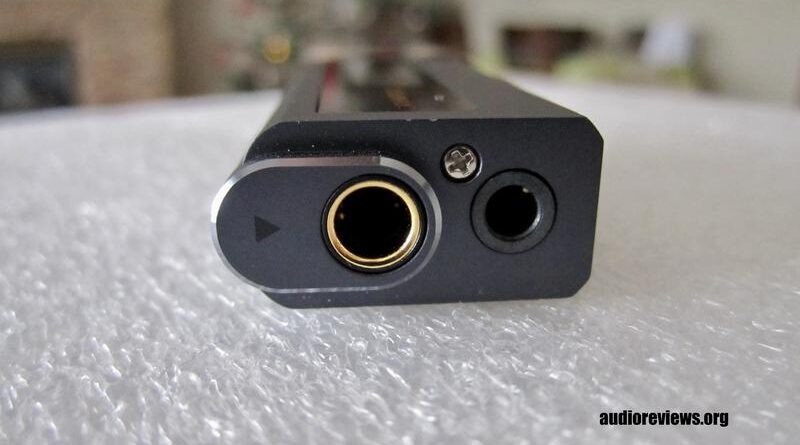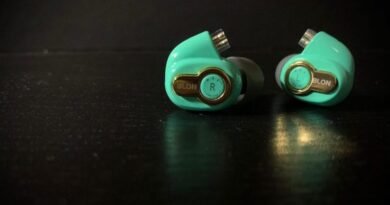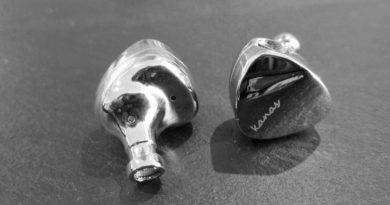Colorfly CDA-M2 Review – With Flying Colors
The Colorfly CDA-M2 is a powerful dongle with excellent imaging and an organic sound that drives current-hungry low-impedance iems well as well as 300 ohm headphones at the cost of a “healthy” battery draw from the source.
PROS
- Provides a lot of current for hard-to-drive iems
- Supplies lots of power
- Excellent imaging and natural sound
CONS
- Draws a lot of current from source
- No lightning and USB-A adapters
- Slightly heavy and bulky for mobile use
In this Article
The $159 Colorfly CDA-M2 was provided unsolicited for my review by SHENZHENAUDIO, and I thank them for that. You can purchase it from SHENZHENAUDIO.COM.
Introduction
Ever since audio pioneer Gordon Rankin produced a dongle (“a DAC/amp without battery sourced by the host device”) with a current drain small enough to work with a mobile phone, a plethora of companies has released countless models following this concept. We may remember “Dongle Madness” and other sensationalist (but rather unorderly) ranking lists. /
These dongles can be put into two end member categories: such with power, and such with low battery drain (AudioQuest DragonFly series). The powerful ones drive low-impedance earphones/headphones well but drain your phone’s battery fast (e.g. ifi Audio Go bar). The battery conserving ones may not be used for earphone/headphone with impedances below 24 ohm (bass would be mushy as it needs the most power).
The art is to produce a dongle with the best compromise between the two. A successful example is the $250 Questyle M15. The ColorFly CDA-M2 (another “Fly”) balances this fine line relatively well with lots of power and an acceptable battery drain.
Colorfly is not as new a company as one might think, they are subsidiary of Colorful, the graphic card manufacturer. The founder of Luxury & Precision (Mr Wan) was the former engineer for Colorfly. He designed the very first digital Chi-Fi audio player that is able to decode 24 bit files. He also designed the circuitry of the CDA-M2, which follows the highly acclaimed M1 model.
Specifications Colorfly CDA-M2
| DAC: dual Cirrus Logic CS43198 Operational Amplifier: XR 2001 Noise Suppression: H-Depop Dimensions: 58*25*13.5mm Weight: ≈27g USB Interface: Type C Screen: 128*64 OLED Signal-to-Noise Ratio: 130dB Frequency Response: 20Hz ~ 20kHz Dynamic Range: 130dB Decoding Formats: PCM 32Bit / 768kHz DSD 256 / Native DSD 256 1 Dop Digital Filters: Fast LL (fast roll off, low-latency) Fast PC (fast-roll off, phase compensated) Slow LL (slow roll off, low-latency) Slow PC (slow roll off, phase compensated) Non OS (non oversampling) Tested at: $159 Purchase link: SHENZENAUDIO.COM | THD+N: -114dB@RL =600Ω,0dB/balanced -106dB@RL =32Ω,100mW/balanced -112dB@RL =600Ω, 0dB/unbalanced -108dB@RL =32Ω,100mW/unbalanced Headphone Jack: 3.5mm Unbalanced / 4.4mm balanced 3.5 mm also serves as coaxial output Output Level: 2Vrms @RL=600Ω unbalanced output 4Vrms @RL =600Ω balanced uutput Output Impedance: 0.83 ohms for balanced, 0.56 ohms for single-ended Maximum Output Power: 125mW@RL =32Ω Unbalanced uutput 250mW@RL=32Ω balanced output Firmware: Support for future upgrades |
Physical Things and Functionality
In the box are the CDA-M2, a ribbon USB-C cable, and the manual. The CNC machined chassis is made of zinc alloy with a glass covered OLED screen (with 10 brightness levels). The device works plug-and-play with Apple, Android, and Windows devices (from version 10; a Windows driver for earlier version can be downloaded from the company site). A lightning cable for iPhone is not included.
The body may be relatively small but I find it slightly heavy at 27 g. Also, I’d like to see a soft case to protect it from crashing with the phone or computer it is attached to.
The device is hardware controlled by its three buttons. You will have to set the output on your host device to near 100% (I usually do 80%). You can adjust volume, gain, L and R balance, you have the choice between 5 digital filters (make essentially no difference), and you can switch on an overvoltage suppression (useful when accidentally disconnecting the device).
You can select screen brightness, rotate the display, and select the time it switches itself off. You also have the option to toggle a voltage overflow protection on/off, check the current voltage, and run the CDA-M2 in gaming mode (with presumably lower latency).
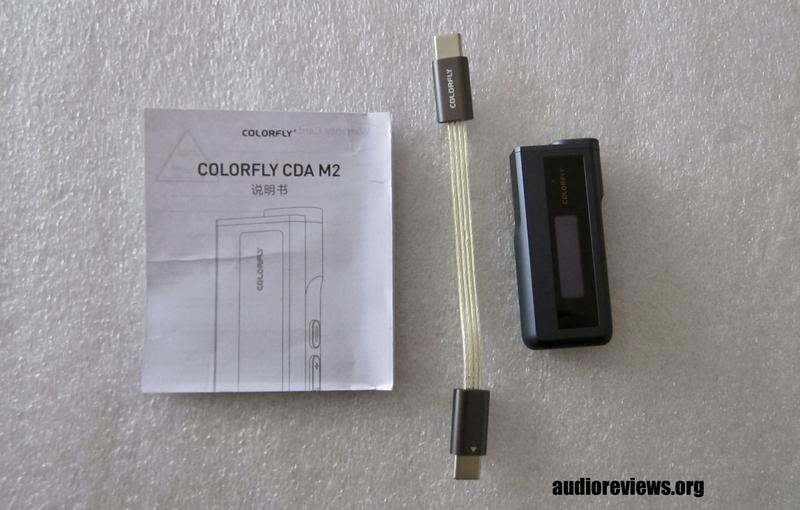
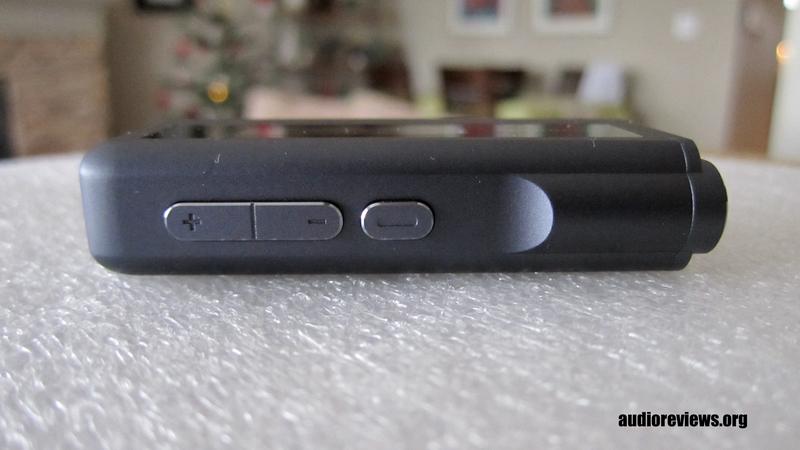
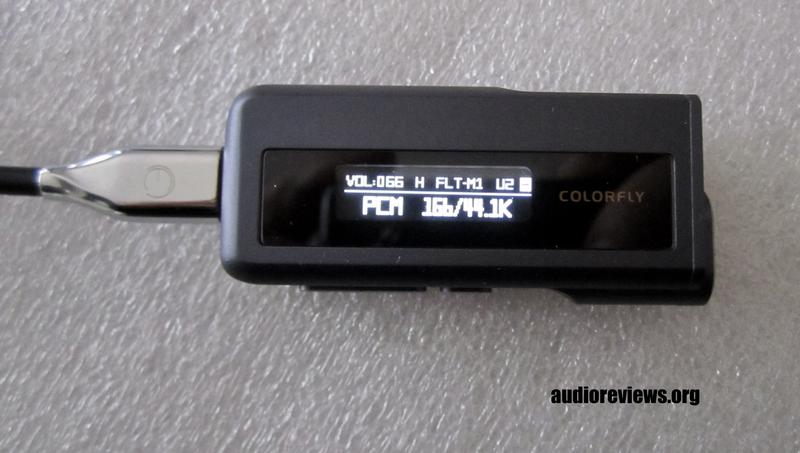
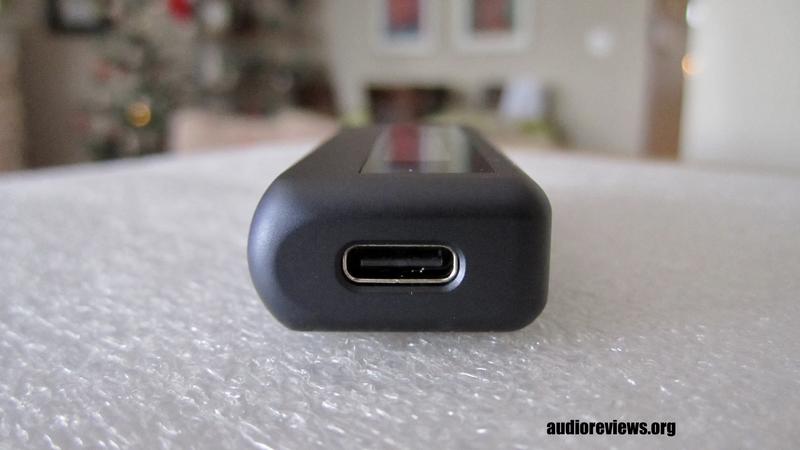
As to the technology under the hood, you find a lot of information in the specs above. The core is a dual Cirrus Logic CS43198 DAC chip that tells you absolutely nothing about the sound quality – in contrary to the internet’s echo chamber. All it indicatesis that a dual DAC may have a better channel separation and cross talk than a single one. But, rest assured, the chips are well implemented so that resulting sound quality is actually very good. Details below.
Amplification and Power Management
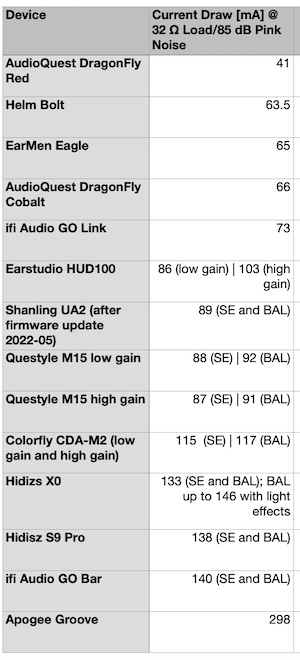
The CDA-M2 provides enough current to drive the notorious thirsty final E5000 earphones – not many dongles can do that. It also handles 300 ohm headphones such as my Sennheiser HD 600 well. Providing a relatively high current comes at a price: it drains your source faster than, let’s say, the even more powerful Questyle M15.
The CDA-M2 is accepted even by older iPhones, despite Apple’s limitation to a current draw of 100 mA. The Colorfly engineers must have found a way to circumvent this barrier.
This may not play a role with a computer source or a modern phone, but will be a challenge for an older model with a smaller battery. The champions in terms of power management are still the AudioQuest DragonFlys, which, as a downside, don’t drive current-hungry, that is low-impedance earphones well (<24 ohm).
If you want to read up on these particularities around “Ohm’s Law”, I can offer this article as a guide.
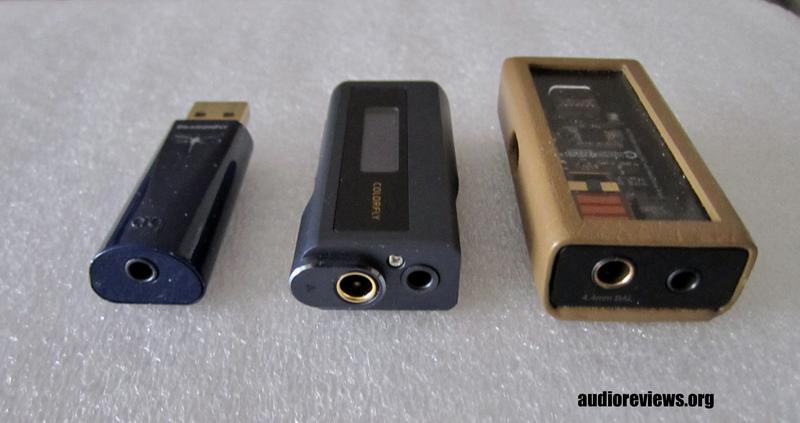
Sound
| Equipment used: Macbook Air/iPhone SE first generation/Questyle QP1R; final Sonorous III, final E5000, Sennheiser HD 600, HD 25, IE 600, and IE 900. |
After having tested umpteen dongles, the CDA-M2 blew me somewhat out of my socks. Sound quality is incredible (considering its $159 price tag). It can be characterized as neutral, possibly with the corners rounded a bit by the slightest temperature, but very agreeable (“musical”) and not analytical like the ifi Audio Go Bar, for example. Very appealing to my ears.
Imaging is absolutely outstanding, beating even my beloved Questyle QP1R ($950 in 2015). I started testing with the easy-to-drive final Sonorous III closed-back headphones and the very difficult-to-drive final E5000 earphones. The CDA-M2 mastered both with ease: luscious, crisp, transparent yet rich. Wonderful dynamics. Biiiiiiig staging. Everything so homogenous and organic.
I am increasingly wondering why we need desktop stacks, at least for transducers that do not need excessive current.
In comparison, the $250 Questyle M15 is slightly more powerful [better for 300 ohm headphones] and has less current draw. While is also handles the notorious final E5000, it drains your phone slower than the CDA-M2. In terms of sound, the CDA-2 may sound a bit crisper and forward, and the M15 a bit thicker and laid back. But these differences are small – both devices are excellent. The most important differences are in power and price.
Concluding Remarks
Not only did the Colorfly CDA-M2 surprise me, it also completely convinced me: tons of features, super sound. What a great dongle that raises the bar in the $150 region.
Until next time…keep on listening!

Disclaimer
Our generic standard disclaimer.



